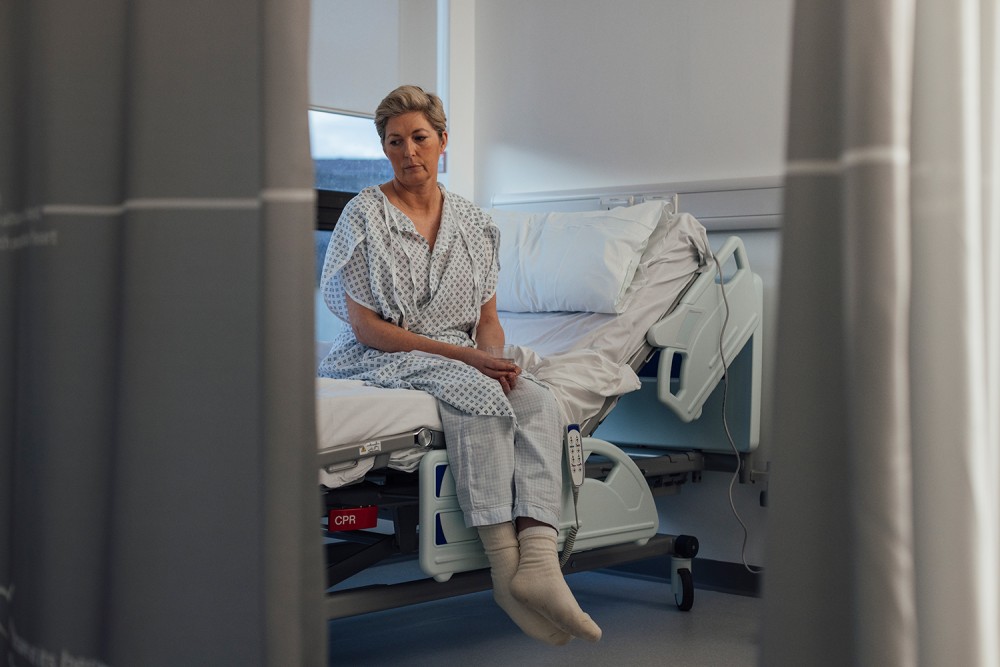
(Photo by SolStock / E+/ Getty)
If you’ve never undergone a procedure in an outpatient surgical center, you can expect an experience like this: a nurse hands you some nonslip socks and one of those open-in-the-back hospital gowns. They then instruct you to head to a changing room, take off your clothes, and place them in a tiny locker. The locker key you’ll be given will look about as sophisticated as a screwdriver. Once you manage to tie the neck cords of your gown into a bow, a task that always challenges me, you’ll step into a large room.
The instant you look around that room, some version of four uncomfortable words will rattle your psyche: I feel extremely vulnerable. Six or eight other patients, facing you from their own bays (with their privacy curtains half-drawn or not drawn at all), sit in recliners just like the one assigned to you. Aware that your own backless gown resembles your health insurance plan in a conspicuous way—every time you turn around you discover something that’s not covered—you’re eager to have a seat. As you wait for someone to confirm your birth date for the ninth time, you try to look comfortably at ease, which is what every other scantily clad person in the room aims for as well. If you’re lucky, an aide will place a warm blanket on your lap—a luxury that Adam and Eve would’ve loved to have instead of their fig leaf. There you sit, surrounded by other precious people in skimpy gowns, frail creatures all of you, feeling particularly vulnerable as you await the call for surgery.
If we’re honest with ourselves, to be alive is to be vulnerable. It’s inextricably part of being human. We’re born naked and without any self-protecting parts. No fangs. No venom. No horns. No camouflage. Just tender flesh waiting for some clothes to arrive and a few modest protective devices that we learn to develop over time.





